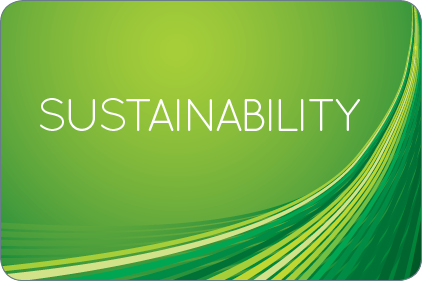- What do we want to achieve?
- How many goals should we set?or
- How do we make certain our goals are relevant to our business?
Below are eight tips I’ve found beneficial as Tyson Foods’ sustainability goal-setting process has matured. I believe our implementation of these tips has helped ensure that our sustainability goals align with our business and advance us in our mission of Making Great Food. Making A Difference.®
1. Establish sustainability goals unique to your business and in support of your overall culture, mission and strategic direction. Don’t treat sustainability goals as a “nice to have” initiative separate from your core business. Instead, design goals such that they make a positive impact on your company’s social, economic and environmental performance. Valuable and effective sustainability goals should enhance and benefit all aspects of your company’s performance.
2. Sustainability goals should be a reflection of your entire business. This includes not only the environment, but also social and economic impacts and performance. For those in the food-processing industry, this can include food safety, product research and development, hiring and labor practices, workplace safety, supply-chain engagement, product distribution, and community support. Give top priority to goals that can have a meaningful impact; are of greatest concern to stakeholders; offer the best return on investment; and have potential to build internal momentum and support.
3. Sustainability goals cannot be created or executed in a silo. Consult with your company’s subject-matter experts and external stakeholders when setting goals. Internal subject-matter experts know:
- The fine details about what they do and why
- How their “piece of the pie” fits into your company’s social, economic and environmental sustainability strategy
- Which goals they can easily implement to close performance gaps
- Which goals will require more planning, resources, and communication
External stakeholders such as customers, non-government agencies, industry associations and academia lend to the objectivity and integrity of your efforts, and can help make sure you consider every aspect of a goal and its potential impacts.
4. Ensure your sustainability goals are SMART (Specific, Measureable, Achievable, Results-oriented, and Time-bound). In addition, your goals should be balanced. A goal that is unachievable can make your sustainability performance look weak and damper employee morale. An “easy” goal could be perceived as green-washing, which could damage your credibility. Set goals that can be achieved with “stretch” and that resonate with your stakeholders and their expectations.
5. Develop a detailed action plan for achieving each goal. Identify resource requirements, measurable metrics, timelines, a progress report structure and a goal owner. Even if a goal is designed to be achieved through a collaborative team approach, someone needs to own the goal and report progress. Moreover, think strategically about the resource requirements and timing of your goals. Give careful consideration to your company’s culture, leadership engagement, business trends and challenges, and current resource availability. It’s acceptable to establish different timeframes for each goal and set certain types of goals in the beginning of your sustainability journey versus further down the road.
6. Once goals are set and resources allocated, empower your employees to take action and improve performance. When sharing goals, clearly communicate the “who, what, when, where, why, and how” of your sustainability strategy. Explain what the desired end state looks like. Give employees a chance to share their ideas and make the goals their own. The best opportunity for improving sustainability performance occurs when the people responsible for the day-to-day operations understand why they are doing things, accept responsibility for their piece of the pie, and feel they have an open door for reporting potential shortcomings.
7. Once efforts are under way, measure and report the progress made in fulfilling sustainability goals. Regular internal communication is critical for ensuring:
- Everyone maintains an understanding of the desired end results
- Efforts remain on track and do not fall short or become perceived as a “program of the month”
- Resources are properly allocated
- Adjustments, if needed, are made in a timely manner
External communications are also important but need not occur as often as internal goal progress reports. Instead, consider developing a formal communication plan that establishes pre-defined points in which you will communicate externally about your progress, adjustments or other goal-related activity.
8. Senior leadership must be the champion of your sustainability goals. Senior leadership can accelerate a company’s progress in fulfilling its goals. They can help ensure adequate support and resources are provided, and that sustainability goals are integrated into the company’s strategic plan and budgeting process. Additionally, when senior leaders have a pulse on the key sustainability opportunities impacting their business, stakeholders begin to understand the importance and value the company places on sustainability.
Goals are a fundamental element of a company’s sustainability strategy. They provide measureable targets that lead employees in an agreed upon direction towards the realization of a company’s sustainability vision. Without measurable targets and a plan of action, your company’s sustainability goals may be viewed as an afterthought or a “wishful thinking” effort.





Report Abusive Comment